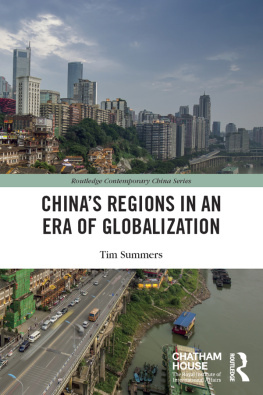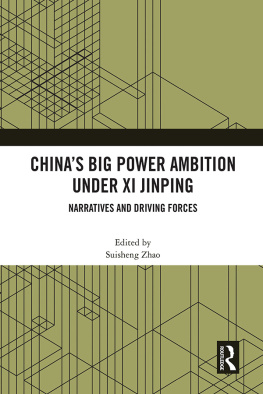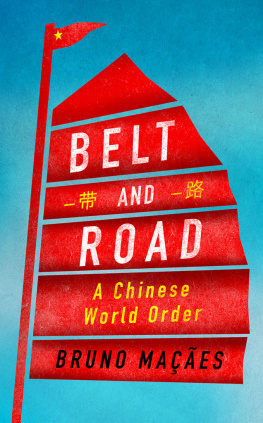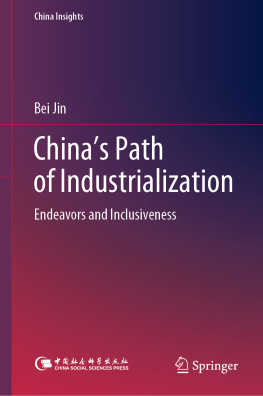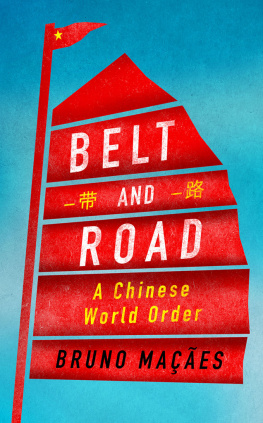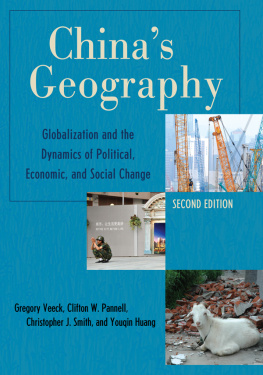Chinas Globalization from Below
This book analyzes the Chinese-centered globalization from below brought about by Chinas entrepreneurial migrants and conceived of as a projection of Chinese power in the Belt and Road Initiative partner states. It identifies the features of this globalization from below, scrutinizes its mutually reinforcing relationship with Chinas globalization from above, and shows that these two globalizations are intrinsically related to the construction of a new international order. It outlines how the actors in Chinas globalization from below include Chinese emigrants who are located in informal transnational economic networks. It reveals that Beijing has enacted many laws that compel these emigrants to contribute to the development of their country of origin but also influences them through the successful promotion of a specific type of deterritorialized nationalism; and that China is ready to impose harsh punitive actions on political elites in partner states which fail to protect its migrants or limit their economic activities. Finally, it argues that Chinas globalization from below is fundamentally different from the non-hegemonic globalization from below represented by, among others, Lebanese and East Indian traders, and that Chinas globalization from below is rather a self-interested national strategy intended to support the construction of a Chinese-centered international order.
Theodor Tudoroiu is a senior lecturer at the University of the West Indies, St. Augustine campus, Trinidad and Tobago.
Routledge Contemporary China Series
The Politics of Waste Management in Greater China
Environmental Governance and Public Participation in Transition
Natalie Wai Man Wong
Hegemony with Chinese Characteristics
From the Tributary System to the Belt and Road Initiative
Asim Dogan
Homeownership in Hong Kong
House Buying as Hope Mechanism
Chung-kin Tsang
Local Clan Communities in Rural China
Revolution and Urbanisation since the Late Qing Dynasty
Zongli Tang
Chinas Energy Security and Relations with Petrostates
Oil as an Idea
Anna Kuteleva
Ethnic Identity of the Kam People in Contemporary China
Government versus Local Perspectives
Wei Wang and Lisong Jiang
Chinas Globalization from Below
Chinese Entrepreneurial Migrants and the Belt and Road Initiative
Theodor Tudoroiu
Civil Society in China
How Society Speaks to the State
Runya Qiaoan
For more information about this series, please visit: https://www.routledge.com/Routledge-Contemporary-China-Series/book-series/SE0768
Chinas Globalization from Below
Chinese Entrepreneurial Migrants and the Belt and Road Initiative
Theodor Tudoroiu
First published 2022
by Routledge
2 Park Square, Milton Park, Abingdon, Oxon OX14 4RN
and by Routledge
605 Third Avenue, New York, NY 10158
Routledge is an imprint of the Taylor & Francis Group, an informa business
2022 Theodor Tudoroiu
The right of Theodor Tudoroiu to be identified as author of this work has been asserted by him in accordance with sections 77 and 78 of the Copyright, Designs and Patents Act 1988.
All rights reserved. No part of this book may be reprinted or reproduced or utilized in any form or by any electronic, mechanical, or other means, now known or hereafter invented, including photocopying and recording, or in any information storage or retrieval system, without permission in writing from the publishers.
Trademark notice: Product or corporate names may be trademarks or registered trademarks, and are used only for identification and explanation without intent to infringe.
British Library Cataloguing-in-Publication Data
A catalogue record for this book is available from the British Library
Library of Congress Cataloging-in-Publication Data
A catalog record has been requested for this book
ISBN: 978-1-032-07002-5 (hbk)
ISBN: 978-1-032-07006-3 (pbk)
ISBN: 978-1-003-20494-7 (ebk)
DOI: 10.4324/9781003204947
Typeset in Times New Roman
By Deanta Global Publishing Services, Chennai, India
Renardine
Contents
I would like to thank Routledge and Peter Sowden, the Editor for Asia, Russia, and Eastern Europe, for supporting this project.
I would also like to thank an anonymous reviewer for their useful suggestions.
Finally, I am grateful for the moral support provided by my colleagues in the Department of Political Science at the University of the West Indies, St. Augustine campus.
DOI: 10.4324/9781003204947-1
Unknown to many, there are no less than five contemporary globalizations. This book is the first to analyze the most discreet of them: the Chinese-centered globalization from below. It is enacted by millions of Chinese entrepreneurial migrants hence the from below label that everybody can see and many anthropologists have studied. But it is also closely associated with exotic-sounding concepts such as deterritorialized nationalism and normative power; unusual structures that include the overseas Chinese state; obscure activities such as overseas Chinese work and united front work; and grandiose strategies that target no less than the construction of a new international order. These various aspects have already been examined, separately, by academics ranging from aforementioned anthropologists to International Relations (IR) scholars. However, the overall phenomenon they form has never been put together and analyzed in its fascinating complexity. This is done in the following pages in the hope that other studies will further develop this field of research.
Globalization is widely acknowledged as the most important international process of our times. Hated or hailed, the tremendous Neoliberal, Western-centered transformation of the world enacted by multinational corporations and shaped by multilateral institutions cannot be ignored by anyone. However, the first sentence of this Introduction has certainly surprised a good number of readers. Five globalizations? Unlikely. I would have heard about them. In fact, two from below ones have already been studied in detail. In their case, possible puzzlement is simply due to the relatively narrow fields to which associated scholars pertain. On the one hand, a significant corpus of literature concerning the transnational social movements analyzes what is known as the counter-hegemonic globalization from below: the political resistance movement organized by transnational protest networks that try to construct a global opposition to Neoliberalism. The World Social Forum and the highly publicized 19992001 anti-globalization protests of Seattle, Washington, Quebec, and Genoa are part of this globalization. On the other hand, anthropologists have provided in-depth studies of the non-hegemonic globalization from below represented by informal transnational economic networks, which include shuttle traders and local street vendors of global gadgets. Unconcerned by hegemony, the informal economy enacted by such small traders nevertheless challenges the regulatory framework of the Neoliberal international order. It fills the niches and interstices neglected by the Western-centered globalization from above that, in many poor Global South societies, it actually replaces. Scholars, on the contrary, have been hesitant to speak explicitly about the two globalizations associated with Chinas transformation into a global power. The frequently employed term globalization with Chinese characteristics remains rather ambiguous. A clear difference should be made between the Middle Kingdoms role within two different globalizations from above. China is deeply involved in the working of the Western-centered one, but mainly as a key source of manufactured goods. Despite significant efforts to upgrade its status, Beijing plays only a marginal role in setting the rules of the game. This is why it has launched its own globalization from above that uses the Belt and Road Initiative as its main vehicle and the Chinese socialization of political elites in partner states as a highly effective instrument. At the same time, it has set up the Chinese-centered globalization from below studied in this book. Interestingly, Chinas two globalizations are interconnected and reinforce each other. They form a virtuous circle conducive to the construction of a new, Chinese-centered international order, which represents Beijings ultimate objective. When all five globalizations are considered, it is important to emphasize the fact that they are not forms, dimensions, or components of one general process. They represent separate processes, with distinct and frequently contradictory logics and dynamics. In particular, the Western-centered globalization from above is explicitly or implicitly challenged by all the other ones, which have in fact emerged as reactions to its dominance.


